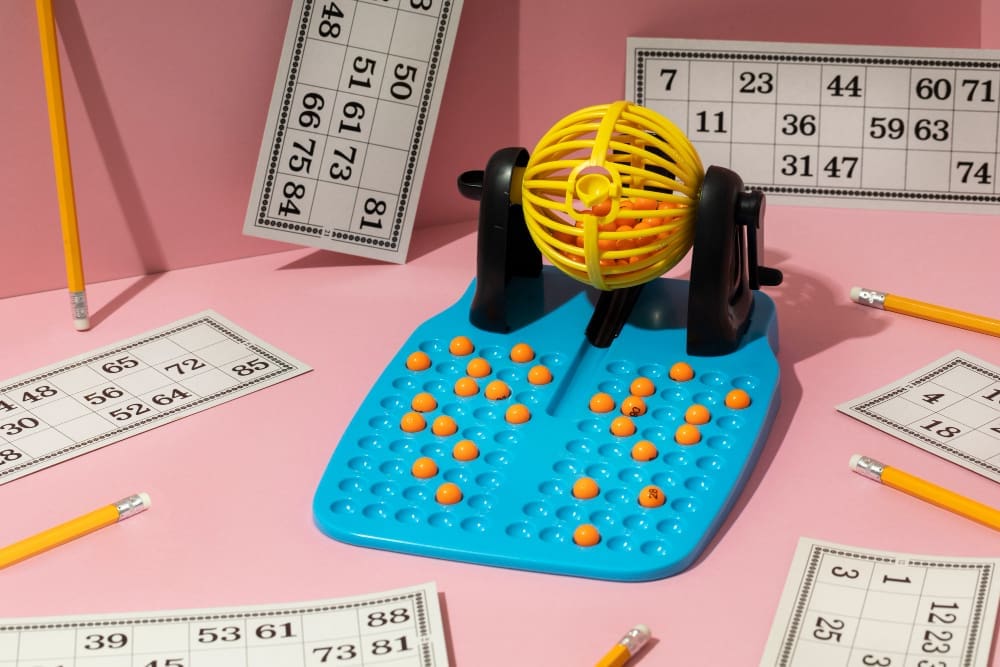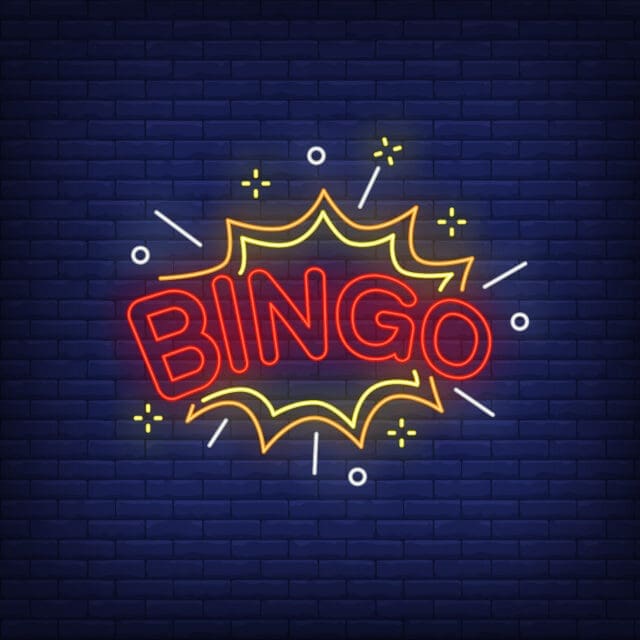Bingo is one of the classic games that are suitable for all ages. There isn’t any strategy involved or any form of meticulous gameplay. Honestly, what’s not to like? Any individual can play, and we like it that way. Let’s explore how to bring bingo to your next game night or help you plan with friends to hit the local bingo hall sweat-free.

Bingo is a simple and timely game, so there is no need to worry if you’re wondering, “How long is bingo going to take?” Bingo scorecards are 5×5 boards with a total of 25 squares. Typically, the square in the center of the board is a “free” square. This means that you are one step ahead before you even begin playing. Let us set you up for a successful round or two of bingo.
1. Get your scorecard & bingo chips.
Each player will need at least one scorecard per round of bingo that you play. A scorecard has 25 randomly numbered squares, with a big ‘“B-I-N-G-O” scribbled across the top. You aim to get five bingo chips in a row: horizontal, diagonal, or vertical across the board, and be the first player to yell “BINGO!” This will crown you as the winner of the round.
You will also need bingo chips. These are used to cover the bingo squares that the caller calls out. Any small items will work – poker chips, rocks, skittles, or coins are popular options.
2. The Game Letter-Number Combination.
In standard bingo, there are 75 letter-number combinations. A letter-number variety would be any letter from “B-I-N-G-O” and a corresponding number. For example, “B-13” would indicate that you are looking at your scorecard under the “B” column for the number “13.” If there is a 13 under the letter “B,” then you can cover it with a chip, and you are one step closer to getting that bingo win.
For a more simplified version, you can replace the letter-number combination with pictures or words. This would be a good idea for a holiday-themed or lesson-themed board.
3. Set the Caller.
The caller is the person that is responsible for calling out the letter-number combinations on the bingo balls as they arise. The caller can play with everyone else to experience all the bingo fun. In bingo halls, there is typically already a designated caller.
4. Bingo Balls.
Most bingo game sets come with a rotating cage full of bingo balls. Each ball has a number-letter combination corresponding to the bingo board spaces (e.g., B8, I29, N2, G22, O19, etc.)
The caller will sequentially spin the bingo ball cage (also called a bingo spinner), and a ball will roll out on each rotation. This ball is then read aloud by the caller. The bingo ball cage ensures a random sequence of balls and prevents cheating from occurring among players.
5. Place the Chips.
Your first chip is a freebie. Most bingo cards have a “free” space in the center of the board. Don’t forget to start your board with that “free” space – it could just be your token to winning.
As the caller reads each bingo ball aloud, check your scorecard to see if you have the letter-number combination that was drawn. For example, if the caller reads “G43,” you’d look under the “G” column for number 43. If you have it, you can cover that space with a bingo chip, and you are one step closer to winning. You do nothing for that turn if you don’t have the specific combination.
6. BINGO!
Once you have five tokens in a row: horizontally, vertically, or diagonally, you’ve won. Shout “BINGO,” and you will get your card checked and win that round. Congrats!
Most games of bingo take approximately ten minutes tops. It truly depends on the scorecards in rotation and their compatibility with the sequence of called bingo balls. Some players may get their bingo win before you even get a chance to place your first called chip. The basis of luck in this game makes it fun, carefree, and enjoyed by all, even celebrities.






